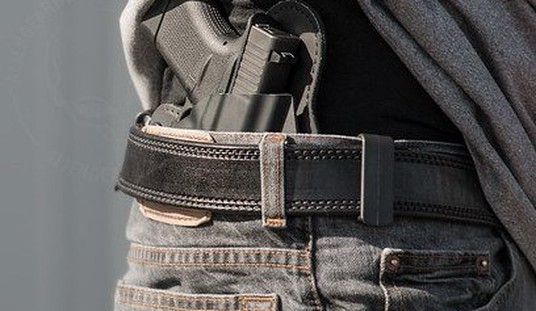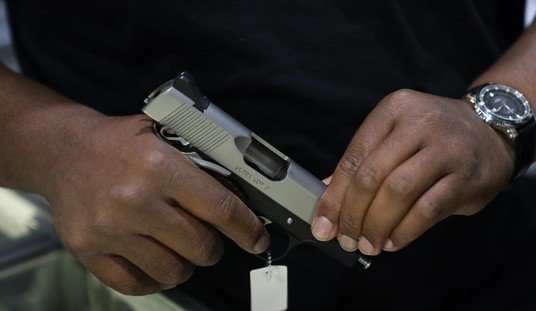“It was the best of times, it was the worst of times, it was the age of wisdom, it was the age of foolishness, it was the epoch of belief, it was the epoch of incredulity, it was the season of Light, it was the season of Darkness, it was the spring of hope, it was the winter of despair…”
—A Tale of Two Cities

Last week’s 2016 Presidential election saw bombastic Republican populist businessman Donald Trump pull out a stunning victory over one of the most self-evidently corrupt candidates to ever run for the office, influence-peddling Democrat Hillary Clinton.
The immediate reaction of most gun owners and the gun industry ranged the spectrum from relief to joy. After all, Hillary Clinton was the most radically anti-gun candidate to ever run for the Presidency, and she had made clear that bankrupting the gun industry be finding a way to repeal the Protection of Lawful Commerce in Arms Act (PLCAA) was a key focus of her administration.
Now that Mrs. Clinton is vanquished, the gun industry is now facing another reality: the world we were all expecting and preparing for as an industry had radically changed, and we have been overtaken by events.
Clinton’s unexpected defeat, along with the sudden possibility that some major gun reforms now stand a high probability of being passed early in the allegedly pro-gun Trump administration, means that the industry itself is going to probably face a radical change in demand from buyers that will favor some companies and drive others out of business.
Here are five ways I expect the fallout of the 2016 election to radically change the gun industry.
The Death of the Budget AR?

Springfield Armory’s Saint series of AR-15 rifles was timed to enter the market at a time everyone expected that there would be a mad post-election rush on any and all “military style” rifles that could be produced.
Now that Clinton has skulked off to Chappaqua and the likelihood of a federal “assault weapon” ban has become very remote, it isn’t likely that the market is going to see as much demand for people attempting to stockpile multiple budget AR-15s. Instead, we’re likely to see the AR market contract, with buyers consolidating around manufacturers of “better-than-mil-spec” offerings in the $1,200-$2,000 range which can better handle the demands of serious shooters who put thousands of rounds through their rifles every year, and who may put that many rounds through an AR-15 in a single class.
The contraction is liable to force many smaller boutique AR-15 companies out of the market over the next few years, but don’t fret; what will remain will be those companies who are able to innovate, carve out a solid market niche, and deliver bomb-proof guns at a good price.
We’ll likely see similar consolidation around manufacturers of other military-style carbines and battle rifles at the same quality and price points, while lower-end producers might also find themselves going belly-up.
We could also possibly see a breakout of bullpup-style rifles as they are better adapted to American shooters and their price points no longer seem quite as high in comparison with other rifles.
Enjoy the Silence

Another gun law reform we expect to see passed this year is the Hearing Protection Act, which removes silencers from the National Firearms Act (NFA), a move long overdue. Under current law, people who desire one of these gun mufflers to help reduce the sound of the muzzle blast must pay a punitive $200 federal tax, and then wait the better part of a year for the Bureau of Alcohol, Tobacco, and Incredibly Poor Service (BATIPS) to approve the paperwork. If removed from the NFA, silencers will become much more attractive investments for many shooters, and we can expect demand for them to skyrocket.
The National Rifle Association no-so-subtly showed that the Hearing Protection Act was high on their interest list by tweeting about silencers within hours of Trump winning the election, even before Mrs.Clinton conceded.
Learn about the history of #suppressors with @NRA and @silencerco: https://t.co/1HBVpCqVCc #FightTheNoise pic.twitter.com/eVufkxcaP2
— NRA Blog (@NRAblog) November 9, 2016
Concealed Carry Market on Maximum Overdrive

Two things President-Elect Trump had promised should have a significant impact on the concealed carry market: an executive order repealing prior executive orders that have made military bases and facilities “gun free zones” ripe for terror attacks, and the passage of some version of a national concealed carry reciprocity act, which will open up the entire country to concealed carry. Concealed carry has already surged in recent years thanks to state laws expanding where people can carry, and opening up entire regions of the country that were previous verboten will only accelerate the trend.
Expect these changes to help not only manufacturers of concealed carry handguns, but also manufacturers of concealed carry holsters, tactical lights, and related concealed carry paraphernalia ranging from ammunition to weapon lights to defensive knives often carried in conjunction with concealed handguns.
Here Comes the (Training) Boom

It’s comparatively easy to make an educated guess on emerging trends within the firearms buying market based upon prior performance and changes in laws, but it’s a bit more difficult to to predict what people are going to do with their guns and accessories once they’ve purchased them.
That said, recent trends have suggested that there is a firearms training renaissance well under way in the United States in recent years. Youth programs have exploded in popularity in recent years, and as these shooters grow older and matured, they’re following other market trends, and have purchased handguns and modern sporting rifles.
Shooters are also showing an interest in a wide breadth and depth of training, ranging from rudimentary concealed carry concepts to extreme close quarters (ECQC) to team tactics classes to aerial gunnery from helicopters (which is becoming surprisingly popular as helicopter hog hunting takes off) to precision rifle shooting, to various classes designed to help people excel in differing shooting sports.
Return of the Bolt Gun

From economy hunting rifles capable of astonishing out-of-the-box accuracy to the surge in popularity of high-end long range target shooting, to newfound interest in scout rifles from both manufacturers and shooters, bolt-gun enthusiasts have never had it as good as they do now. Now that prospective buys aren’t as focused on the guns that another President and congress might have attempted to take away with an “assault weapon” ban, they will be stretching their dollars (and their effective range) with guns designed to go the distance.
This will be boost not just for traditional rifle companies, but for manufacturers of scopes, slings, bipods, and related accessories.
Conclusions
Every market endures periods of booms and busts, disruptive events, and evolutions in both marker demand and product performance. In 2017, we’re likely to see Johnny-come-lately companies out to make a quick buck exiting the market as it contracts, while innovators and the old guard weather the downshift by focusing on turning out quality to discerning shooters.
It’s going to be a bumpy ride as things shake out, but the strong will survive, forging a stronger industry.








Join the conversation as a VIP Member